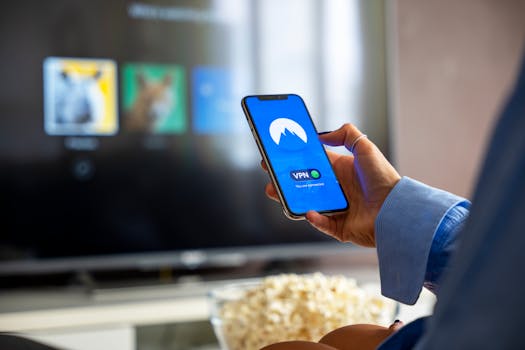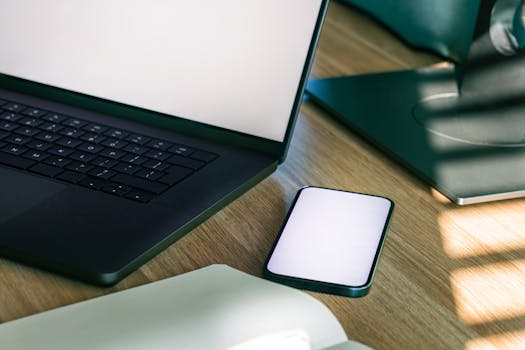Productivity
Task Prioritization Apps That Reduce Daily Overload
Discover actionable strategies for using task prioritization apps to cut daily overload, boost focus, and get more done — including realistic steps, lists, and smart routines.
Advertisement
Taming the daily flood of tasks can feel like carrying groceries up an icy driveway—just when you think you’re steady, something topples. Many have found their footing through task prioritization apps, which structure the chaos into manageable steps and help avoid drop-offs.
Getting lost in endless checklists and shifting priorities is common. What matters most sometimes slips behind what happens first, leading to a sense of being perpetually behind. That’s where smarter intervention with task prioritization apps begins to matter daily.
This hands-on guide shows how the right techniques, combined with the top task prioritization apps, actively carve a path through overload. Dig into strategies, actionable checklists, and concrete features to streamline your workflow, relieve stress, and boost real-world productivity.
Finding the Right Task Prioritization App for Real Needs
Matching your actual workload with the features of task prioritization apps ensures nothing falls through the cracks. You’ll discover what fits your step-by-step reality, not just your ideal.
Most users select apps based on interface or hype, but searching for day-to-day compatibility narrows down your list faster. Notice your recurring tasks and most common bottlenecks before you browse app stores.
Checking User-Focused Features
Actively look for features that eliminate back-and-forth thinking, like simple drag-and-drop priorities or color-coding for urgency. Consider if the app makes it fast to move tasks based on energy, not just due dates.
Try speaking aloud: “I need to see what’s due first, but flag urgent calls for after lunch.” If an app can map to this wording within three taps, it fits your style.
Watch for in-app frustration cues—’tapping for five minutes to reschedule’ or having to rewrite the same task repeatedly. Prioritize solutions where input feels as quick as jotting a sticky note.
Reviewing Long-Term Consistency
Consistency isn’t about perfection but forming a daily rhythm you trust. Check if task prioritization apps offer reminders that prompt you at the right nudge-points without spamming.
If an app nudges, “Time to plan your top three for tomorrow,” right before you log off, you’re building a sustainable habit. Look for patterns that calm your routine, not nag at your day.
Reliable apps keep your lists tidy on both your busiest and slowest days. If you start skipping actions or hiding completed tasks to declutter, try adjusting notification settings or switching layouts.
| App Name | Key Feature | Best User Scenario | Immediate Takeaway |
|---|---|---|---|
| FocusTask | Time-block priorities | Juggling meetings and solo work | Try color-coding for urgent slots |
| QuickList Pro | Snooze for later | Unpredictable daily changes | Snooze instead of deleting |
| PeakPlan | Weekly overview | Project planning mindset | Review Monday AM, regroup Friday PM |
| FlowTasks | Automatic priority rank | Decision fatigue midday | Let the app sort by urgency |
| TidyTrack | Visual dashboard | Prefers graphic view | Glance through the day ahead at breakfast |
Sequencing Tasks for Steady Progress All Day
Breaking large demands into clear sequences lets you chip away at your list throughout the day without mental overload. Task prioritization apps automate this chunking process.
Identify your hardest task first, then arrange smaller supporting actions. Many people say, “If I finish that big contract review after coffee, the little items will flow.” Let apps model this order.
Mapping Out High-Impact Tasks
If your schedule feels packed at noon, frontload high-value items. Drag them to morning slots when possible. Task prioritization apps simplify reordering—so you’re not locked into yesterday’s order.
Avoid putting all high-pressure items together. Blend one demanding job with two easier wins so productivity never stalls completely. Revisit this sequence weekly for best results.
- Drag your toughest task to the first block daily: builds momentum when energy is strong.
- Insert a five-minute win next: energizes you after the hardest push.
- Group similar tasks (calls, emails) together: reduces context-switching and decision fatigue.
- Mark any task that can wait with a soft color: quick visual cues aid instant reprioritization.
- Check off easier tasks with one tap: creates a sense of progress and keeps morale up.
Revisit this mix during afternoon breaks and reset priorities in your app. This sequence shapes a cycle you trust, which enhances motivation and consistency.
Balancing Priorities Without Burnout
Avoid working top priorities back-to-back without pause. Use your app’s break reminders or insert micro-tasks between challenging slots as daily breathing room.
When you notice tension creeping in, pause and push one stressful task to later. Don’t delete it—just shift its slot with your app. This keeps your schedule balanced without guilt.
- Spread difficult tasks over the week: reduces end-of-week overload by pacing high-demand work evenly.
- Use gentle push notifications for self-care breaks: prioritizes focus and health together.
- Mark tasks as pending or in-progress instead of urgent: lowers stress by reducing all-or-nothing thinking.
- Insert a fun or creative micro-task next to routine ones: boosts morale and keeps monotony away.
- Review and reclassify priorities every Friday afternoon: refines strategy based on lived experience.
This approach makes high output sustainable—and ensures daily progress doesn’t slip into nightly catch-up stress. Schedule the review; apps make it a single tap at week’s end.
Streamlining Input and Updates with Natural Routines
Building daily input habits into task prioritization apps is easier if entry feels like jotting notes—quick and intuitive. Capture, update, and archive without stalling your flow.
Using Templates for Repeat Tasks
Routine chores benefit from templates. Set up formats for “call reminders,” “weekly reports,” or “home chores” in your app—then add with one click daily or weekly as needed.
A template might read: “Monday, 9:30, clean inbox; Tuesday, 11:00, team status.” This cuts memory load and turns best practices into daily reality without extra effort.
Refine templates based on real-world needs, not just initial assumptions. See which ones are truly reused and delete those that go untouched for weeks.
Voice Capture for Instant Input
Fast input matters when inspiration or new tasks strike away from a desk. Task prioritization apps with voice entry convert “Remember to email Sam” into a to-do in less than five seconds.
Review voice entries nightly for clarity and reword as needed. Embrace casual language; the app isn’t judging style—just capturing intent for follow-through tomorrow.
If you notice unwieldy lists growing with each entry, combine voice capture with list groupings so actionable items won’t hide under uncategorized clutter.
Making Visual Cues Central for Fast Decision-Making
Clear visual cues in task prioritization apps shrink decisions to a glance. Use color, shape, and icons to simplify which tasks demand attention next and what can slide.
Customizing Priority Labels Visually
Creating color-coded urgency flags lets you separate immediate action from background work. Assign red to “do today,” yellow to “active but not urgent,” and blue to “explore if time.” Always check these before lunch.
Keep your visual system consistent. If orange means meetings this week, never use it for finance reviews. This fosters instant understanding each time you open the app.
Pair labels with icons—phone, notebook, or calendar—so you know at a glance if the task means a call, a write-up, or an appointment slot.
Using Visual Overviews for Planning Days
Many task prioritization apps offer dashboard-like overviews or kanban-style boards. Start your morning with a five-minute glance to mark what’s on-deck for the day.
Physically tap or swipe completed tasks into a “done” zone. Visually clearing space provides a small boost, triggering a feeling of closure before new tasks begin.
At week’s end, scan your board. Adjust chunks that stayed untouched—move them up, split them, or archive those that lost relevance. This builds a cycle of improvement every few days.
Reviewing and Adjusting Priorities: Setting a Weekly Reset Ritual
Task prioritization apps reach full effectiveness when paired with a weekly review ritual. This ensures priorities stay fresh, relevant, and achievable, rather than drifting into stale lists.
Scheduling Regular Reflection Sessions
Claim a set time—Friday at 4:30 PM or Sunday before dinner—to open your primary app and recap what you finished and what stalled. Speak aloud: “What slipped, and what drove wins this week?”
Your review might feel like resetting a messy kitchen; you see which tools are essential and which can be shelved or replaced. Treat archived tasks as clutter you can clear with a swipe.
Capture one insight weekly: “I handle calls best early” or “Creative work needs longer blocks.” Use this to drive next week’s first entries.
Reordering Next Week’s Targets
Begin each new week with a clean slate by dragging only truly next-step tasks to the top. Archive leftover items guilt-free; if they matter, they’ll resurface naturally next week.
Group goals by impact, not by old habits. If you notice administrative tasks hijacking your mornings, switch their slot with high-priority creative work. Trust your review insights to beat old routines.
Repeat this cycle for a month. You’ll notice sharper focus, higher completion rates, and a gentler mental load as the app works with your natural rhythm.
Concluding Insights: Living Lighter with Task Prioritization Apps
Every workable strategy in this guide aligns with the strengths of task prioritization apps: visible order, reduced mental clutter, and sustainable productivity. Their right fit makes daily overload genuinely manageable.
Using visual cues, consistent reviews, and realistic routines, you craft a workflow that doesn’t just chase endless lists but builds useful momentum. What matters most surfaces first—without extra noise.
Let your app be a silent partner. Return to its structure at the start and end of your day. Over time, active use will lighten your daily load and raise long-term productivity.
Trending Topics

Step Counter Apps That Motivate You to Move More
Count every step using step counter apps that motivate movement, track goals, and make daily fitness feel rewarding.
Keep Reading
Affirmation Apps That Support Mental Resilience
Strengthen confidence using guided affirmation apps that deliver uplifting reminders and reinforce healthy mental habits daily.
Keep ReadingYou may also like

Fitness Apps That Turn Small Habits into Long-Term Progress
Stay consistent with fitness apps that transform small daily actions into lasting, measurable health and strength gains.
Keep Reading
How to Balance Screen Time with Digital Wellness Tools
Take control with digital wellness tools that track screen time, promote breaks, and encourage mindful tech habits.
Keep Reading
